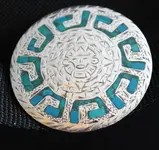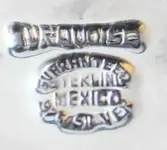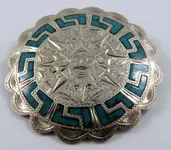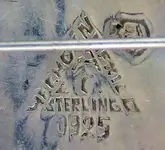DizzyDigger
Gold Member
- Dec 9, 2012
- 6,349
- 12,877
- Detector(s) used
- Nokta FoRs Gold, a Gold Cube, 2 Keene Sluices and Lord only knows how many pans....not to mention a load of other gear my wife still doesn't know about!
- Primary Interest:
- Prospecting
My wife brought me this medallion (don't know what else to call it) and asked
if I could find out anything about it. Included in the lettering on the stamp is
.925, so I know it's sterling. I believe there is turquoise inset in the front.
My instinct is that it's not very old..maybe from the 1950's?




if I could find out anything about it. Included in the lettering on the stamp is
.925, so I know it's sterling. I believe there is turquoise inset in the front.
My instinct is that it's not very old..maybe from the 1950's?











